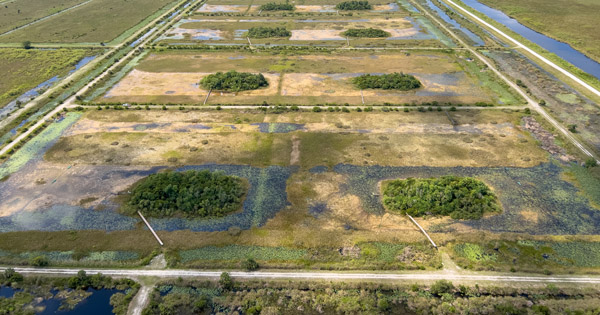
A unique, outdoor living laboratory is giving experts an opportunity to experimentally test restoration techniques on a large, ecologically realistic scale before taking them into the 1.7-million-acre Everglades ecosystem.
DID YOU KNOW: The Loxahatchee Impoundment Landscape Assessment (LILA) is an 80-acre working model of the Everglades ecosystem on the grounds of the Arthur R. Marshall Loxahatchee National Wildlife Refuge in Boynton Beach, Florida?
A COLLABORATIVE EFFORT: Since 2003, this unique facility has been helping scientists from around the world test restoration ideas and learn more about restoring the Everglades. LILA was developed as part of a partnership between the South Florida Water Management District (SFWMD), U.S. Fish and Wildlife Service and the U.S. Army Corps of Engineers.
A LIVING LABORATORY: Researchers from the SFWMD and University of Miami’s Conservation Ecology Lab are using LILA to analyze how hydrological conditions are impacting reptiles and amphibians in the Everglades. Students from UM spend their days wading through LILA’s mashes to study how different water levels in the Everglades can affect the reptile and amphibian communities that live there.
Scientists are currently also experimentally examining the role of hydrology on fish, crayfish, apple snails and tree island tree growth and soils.
GETTING THE WATER RIGHT: Water control is at the heart of LILA, where an electric pump capable of moving more than 45,000 gallons of water (the volume of two swimming pools) per minute can simulate a variety of natural conditions in four enclosed marshes.
LILA has been designed to provide researchers the ability to study the effects of water flow and water levels on various aspects of Everglades ecology (landscape features, wildlife, surface and ground water movement and quality) under controlled conditions.
A PHYSICAL MODEL: The four enclosed 20-acre marshes at LILA, called “macrocosms,” make up a living laboratory. Each of these macrocosms has the same design and specifications and contains three key habitats found in the natural Everglades system.
- Tree Islands – The highest points in the Everglades marsh. These wooded slightly raised “islands” provide drier habitats across the vast wetland. Tree islands support a rich biodiversity of plants and animals and are critical for nesting wildlife.
- Ridges – Long, slightly elevated sections of the marsh landscape that are dominated by sawgrass. Ridges are too wet for tree species.
- Sloughs – Lowest in elevation, they are like streams within the marsh. Sloughs run parallel to ridges and contain water lilies and submerged aquatic plants.
By providing different flows and depths using a system of culverts, canals and pumps, scientists can maintain specific conditions at LILA for their experimental designs in each macrocosm and study the effects of hydrology on erosion, accretion, vegetation and wildlife.
SCIENCE ON DISPLAY: Visitors to the Arthur R. Marshall Loxahatchee National Wildlife Refuge will find LILA located on the marsh trail. Visiting LILA provides an opportunity to spend a morning watching a flock of wading birds. At the same time, scientists are collecting valuable information that will ultimately be used to restore the Everglades.
We encourage you to visit SFWMD.gov/Restoration to learn more about the continued progress to restore and protect America’s Everglades.
